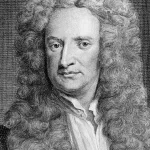Together, Marie and Pierre Curie delved into the study of radioactivity, a term they coined themselves. Their meticulous research led to the discovery of two new elements: polonium, named after Marie’s homeland Poland, and radium. This groundbreaking work not only expanded the periodic table but also laid the foundation for future advancements in physics and chemistry.
In recognition of their extraordinary contributions, Marie and Pierre Curie were jointly awarded the Nobel Prize in Physics in 1903, making Marie the first woman to receive a Nobel Prize. Following Pierre’s tragic death in 1906, Marie continued their research, becoming the first person to win a second Nobel Prize in 1911, this time in Chemistry, for her discovery of radium and polonium isolation techniques.
Marie Curie’s legacy extends beyond her scientific achievements. She was a trailblazer for women in STEM (Science, Technology, Engineering, and Mathematics), challenging the gender norms of her time. Her dedication and perseverance inspired generations of scientists, particularly women, to pursue careers in science despite facing societal barriers.
Throughout her career, Marie Curie emphasized the importance of education and research. She dedicated herself to teaching and founded the Curie Institutes in Paris and Warsaw, institutions that continue to be renowned centers of scientific research and education.
Pioneering Paths: Marie Curie’s Journey Through Science and Struggle
Her journey was not just one of academic pursuit but also a relentless quest for knowledge amidst societal barriers. Facing resistance as a woman in science during the late 19th century, Curie defied norms and enrolled at the University of Paris. Here, she met Pierre Curie, a fellow physicist and her future husband, with whom she would form an enduring scientific partnership.
Together, the Curies delved into the mysterious realm of radioactivity, a term coined by Marie herself. Their groundbreaking work led to the discovery of two new elements: polonium and radium. This achievement not only earned Marie Curie the Nobel Prize in Physics in 1903 but also made her the first woman to receive such an honor.
Yet, amidst the accolades lay profound personal challenges. Pierre Curie’s tragic death in 1906 left Marie devastated but undeterred. She pressed on, becoming the first female professor at the University of Paris and continuing her research tirelessly.
Marie Curie’s legacy extends far beyond her scientific contributions. She pioneered pathways for women in science, defying conventions and proving that gender was no barrier to intellect or achievement. Her journey remains a testament to perseverance and passion, inspiring generations to come.
Unveiling Genius: Marie Curie and the Discovery That Changed Science Forever
Born Maria Skłodowska in Warsaw, Poland, in 1867, Curie’s journey was marked by perseverance and dedication. Despite facing significant barriers as a woman in a male-dominated field, she pursued her passion for science with unwavering determination. Her partnership with Pierre Curie, whom she married in 1895, proved pivotal. Together, they embarked on research that would redefine modern physics.
In 1898, Marie Curie isolated two new elements from pitchblende ore: polonium and radium. This achievement not only marked a significant leap forward in chemistry but also showcased her meticulous approach and scientific acumen. Her methodical experiments and tireless efforts led to the development of new theories about the structure of atoms and the phenomenon of radioactivity.
The impact of Curie’s discoveries was profound and far-reaching. Her work laid the groundwork for future research in nuclear physics and provided essential tools for diagnosing and treating diseases like cancer. The Curie legacy extends beyond scientific achievement; it embodies the spirit of innovation and resilience in the face of adversity.
Marie Curie’s accolades include becoming the first woman to win a Nobel Prize, awarded jointly with Pierre Curie and Henri Becquerel in 1903 for their work on radioactivity. She later received a second Nobel Prize in Chemistry in 1911, making her the only woman to date to win Nobel Prizes in two different fields.
Breaking Barriers: How Marie Curie Redefined Women’s Role in Science
Marie Curie’s impact on science and society was profound. Her tireless work with radioactive elements, alongside her husband Pierre Curie, led to the discovery of polonium and radium. These discoveries not only expanded the understanding of atomic structure but also laid the foundation for advancements in medical diagnostics and treatments.
Imagine the challenges Curie faced in a male-dominated field at the turn of the 20th century. She defied societal norms and persisted in her pursuit of scientific excellence. Through her determination and intellectual prowess, Curie shattered the glass ceiling, becoming the first woman to win a Nobel Prize and the only person to win Nobel Prizes in two different scientific fields (Physics and Chemistry).
Curie’s achievements resonate even today, serving as a beacon of inspiration for aspiring scientists, especially women. Her story encourages us to challenge conventions, pursue our passions relentlessly, and embrace curiosity as a driving force for innovation.
Beyond her scientific accomplishments, Marie Curie’s legacy is a testament to the power of resilience and the importance of inclusivity in scientific discovery. She paved the way for future generations of women scientists, proving that gender is not a barrier to success in the pursuit of knowledge.
From Darkness to Light: Marie Curie’s Radiant Impact on Radioactivity
Born in 1867 in Warsaw, Poland, Marie Curie (née Skłodowska) faced numerous challenges in her pursuit of education. Despite societal barriers, she persisted and eventually moved to Paris to study at the Sorbonne, where she met her future husband, Pierre Curie. Together, they delved into the mysterious phenomenon of radioactivity, a term coined by Marie herself.
Their collaborative efforts bore fruit when they isolated two new elements, polonium and radium, both highly radioactive. This discovery not only expanded the periodic table but also revolutionized medical treatments and laid the foundation for future scientific advancements. Marie Curie’s work laid the groundwork for modern oncology, where radiation therapy became a cornerstone in cancer treatment.
Despite her monumental contributions, Marie Curie faced significant adversity, both professionally and personally. She battled against the prejudices of her time, challenging the notion that women could not excel in scientific fields. Her perseverance and brilliance earned her two Nobel Prizes, the first woman ever to achieve such an honor and the only person to win Nobel Prizes in two different scientific fields (Physics and Chemistry).
Marie Curie’s legacy transcends her scientific achievements; she became a symbol of empowerment for women worldwide. Her life’s work exemplifies the transformative power of curiosity and determination. Even today, her name evokes admiration and respect, a testament to her enduring impact on science and society.
Marie Curie’s journey from darkness to light epitomizes the triumph of intellect and perseverance over adversity. Her discoveries continue to illuminate the path for scientists and researchers, reminding us all of the profound impact one person can have on the world.
Frequently Asked Questions
What was Marie Curie’s educational and research background?
Marie Curie, a pioneering scientist, had a strong educational foundation in physics and mathematics. She earned degrees in Physics and Mathematics from Sorbonne University in Paris. Her research focused on radioactivity, leading to groundbreaking discoveries like the isolation of radium and polonium.
What challenges did Marie Curie face as a woman in science during her time?
Discover the challenges Marie Curie faced as a pioneering woman in science during her era. Learn about the obstacles she overcame to make groundbreaking contributions despite societal barriers.
How many Nobel Prizes did Marie Curie win and for what achievements?
Marie Curie won two Nobel Prizes. She received the Nobel Prize in Physics in 1903 for her pioneering work on radioactivity alongside her husband Pierre Curie and Henri Becquerel. Later, she won the Nobel Prize in Chemistry in 1911 for her discovery of the elements radium and polonium.
How did Marie Curie discover radioactivity?
Marie Curie discovered radioactivity through her pioneering research on uranium ores. In 1896, while investigating these ores, she observed that they emitted rays that could penetrate materials and cause fogging on photographic plates wrapped in light-proof paper. This groundbreaking discovery led to her further exploration of radioactivity and subsequent isolation of radium and polonium.
Who was Marie Curie and what were her major contributions?
Marie Curie was a pioneering physicist and chemist known for her groundbreaking research on radioactivity. Her major contributions include the discovery of the elements polonium and radium, as well as the development of the theory of radioactivity. Curie was the first woman to win a Nobel Prize and remains an icon in the fields of science and research.



